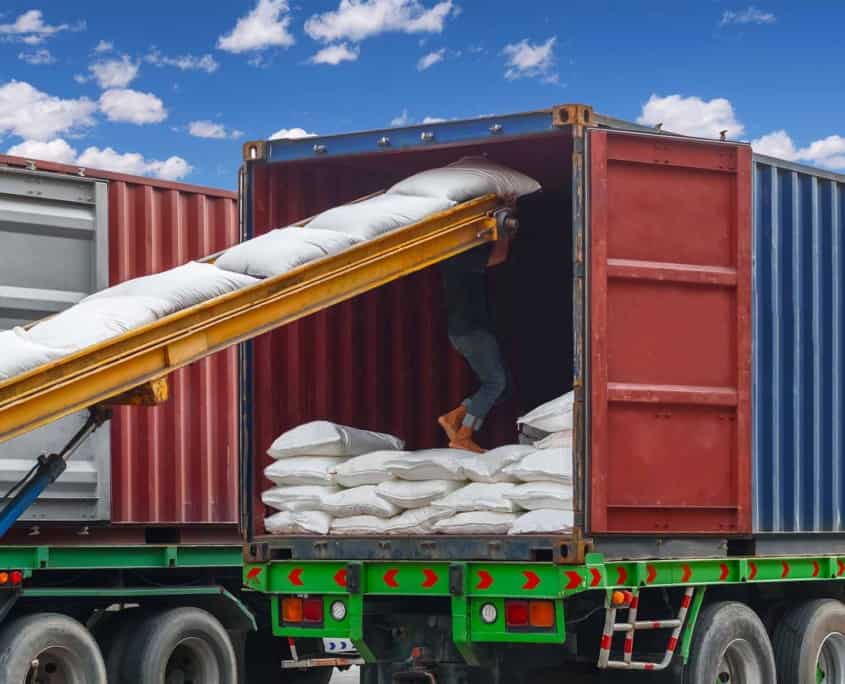
Food Safety for Warehousing and Distribution and How the Cold Chain is a Bit Different
Manufacturers routinely turn to 3PL providers to meet modern supply chain demands. One particularly complex part of modern-day logistics is getting perishable items to the end consumer safely but at a cost point that is manageable to shippers.
This blog will discuss the differences between food-grade shipping and cold chain logistics and provide the basic information a shipper needs to establish a safe, cost-efficient supply chain that is appropriate for their products.
What is Cold Chain Logistics?
Perhaps the key difference between cold chains and normal supply chains is timing. While standard shipments should avoid delays, the perishable nature of cold products means that any delay is potentially fatal to the quality of the product. This makes the process as important to a successful cold chain as the equipment and technology used. Shipments that are left unrefrigerated for even a few hours can mean lost revenue and products that are potentially dangerous to consumers. Shippers need to determine several factors about each product they sell before establishing a cold supply chain:
- What are the maximum and minimum temperatures the product will be exposed to?
- What is the temperature range the product is safe in?
- What is the distance between origin and destination?
- Is the shipment sensitive to direct sunlight?
- What are the typical size and weights of each shipment?
- Is the shipment subject to customs or tariffs if it needs to cross an international border?
- How will the shipment be monitored remotely?
Cold chain logistics is one of the most complex processes a company can undertake, which is why most turn to outsourcing as the answer to getting temperature-sensitive products where they need to go quickly and safely. Even companies that boast a robust supply chain system for ordinary goods hire a third party to design and implement the cold chain logistics they need to deliver their products quickly and safely.
Temperature and climate control are critical factors in storing and delivering safe food products. “Temperature control” is a general term that describes a very specific range of temperatures at which certain products must be kept. Storage and distribution use very specific methods to keep products within safe ranges:
- Ambient. Refers to the natural temperature of the warehouse.
- Air-conditioned. Typically refers to a temperature between 56°F and 75°F. Confectionery products are a good example of a product that must avoid hot and cold extremes.
- Refrigerated. Typically refers to a temperature between 33°F and 55°F.
- Cold/Frozen. Typically refers to a temperature at or below 32°F.
What Does “Food Grade” Mean?
When something is considered “food grade,” it has to meet two important criteria:
- It has to be a material that is safe for human consumption
- It is a material that is acceptable to come into contact with food products
The purpose of making the distinction is to prevent exposing a consumer to potentially dangerous health hazards. Food-grade shipping is important for shipping all foods, not just frozen or fresh food, and it doesn’t take a lot for a trailer that is designated for food shipping to fail an inspection. Shippers require high standards, and it is very important for a carrier to pay attention to how food is shipped.
Cleanliness – Food can’t be shipped in dirty containers, even if they are packaged and boxed. Trailers that were used for other materials need to meet certain standards in order to transport food products.
Moisture – Any moisture in a shipping container can degrade the packaging and even contaminate the products stored within.
Dedicated Space – For a shipping container to be considered “food grade,” it must be solely dedicated to food shipment. The container needs to be completely empty of other products that could contaminate the food product. Better yet, the container needs to be completely dedicated to shipping a specific product.
Odor-free – Odors are another environmental threat to the quality of food-grade shipping. Unusual odors can permeate packaging and contaminate food products.
Secure – All shipments should be secure from people, but food-grade shipments have another threat—animals. A single hole in a trailer can let in raccoons, opossums, and other critters that can quickly destroy a shipment.
Trailer maintenance – Speaking of holes, safe temperature-controlled shipping is predicated on the ability to maintain a constant temperature at all times. Modern shipping technology allows shippers to know the status of their shipment at all times, but this doesn’t protect the shipment from dangerous conditions.
The Importance of Food Safety for Warehousing and Distribution in Fresh Food Logistics
Sheer Logistics helps your business take control of cold chain logistics. The key is finding the correct shipping and warehousing partner.
Sheer Logistics’s refrigerated freight brokers understand what’s at stake when your products don’t stay within a specific temperature range. Our two decades of combined experience have taught us that when it comes to products that need to be temperature-controlled, real time shipping information is the most critical factor when you need to prioritize quality. We handle full truckload refrigerated shipping and LTL shipments, so you spend less but still receive the customized refrigerated shipping options your business needs.







